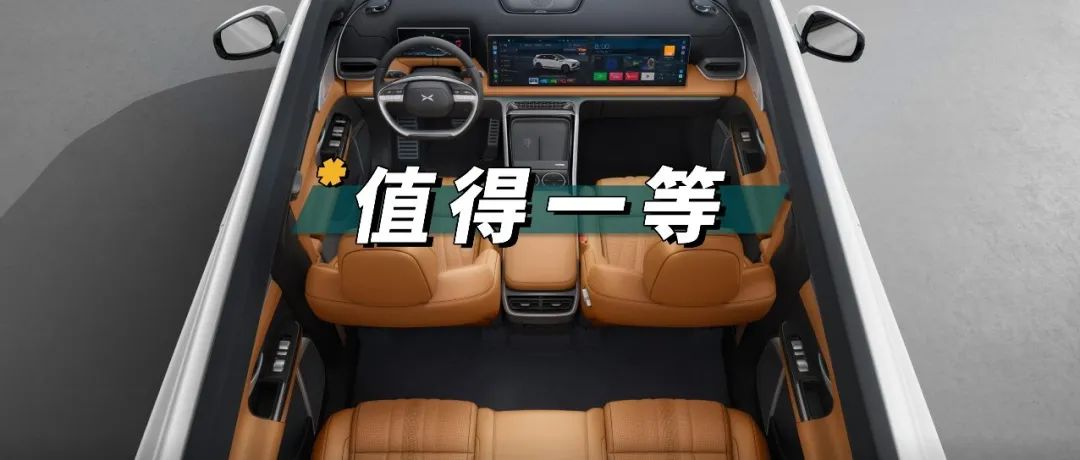Author: Xiao Dong
Editor: Chris
At the end of 2021, XPeng’s fourth model, XPeng G9, carrying the XPeng brand and full-range product technology upward, has already been unveiled.
After waiting for nearly 10 months, XPeng finally revealed the interior design and most of the configuration information of G9 on August 10th.
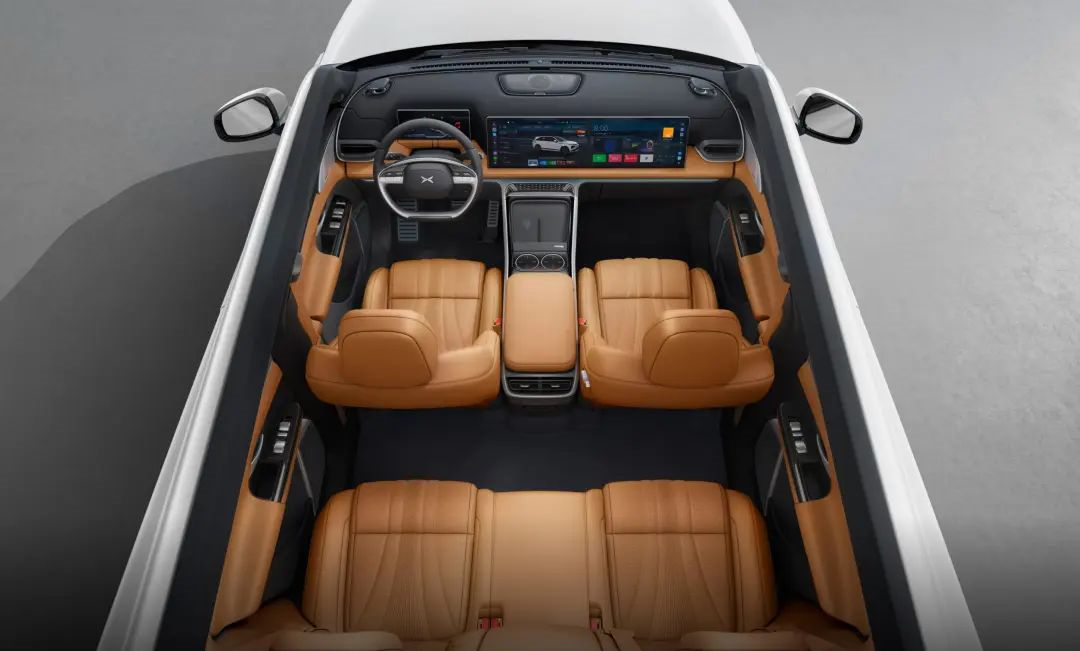
First of all, XPeng G9 will be officially launched in September, and the officially disclosed delivery time is the fourth quarter of this year.
As for the price, XPeng officially denied the 239,900 yuan price rumor. As XPeng’s flagship model, G9 will definitely maintain a certain price level, and G9’s product strength is enough to support this price range.
Perhaps what G9 really faces is the most competitive range of 300,000-400,000 yuan in the intelligent electric SUV market.
The interior has changed greatly
Compared with the interior of XPeng’s first three models, the XPeng G9 adopts a brand-new cockpit layout, and G9 has also become XPeng’s first model with a co-driver screen.
A 10.25-inch instrument panel and two 14.96-inch screens run through the center console. XPeng did not disclose too much specific screen quality. However, the narrow black border and inclination angle between the center console and the co-pilot screen have better performance in practicality and visual effects. The chip uses the current mainstream Snapdragon 8155 chip.
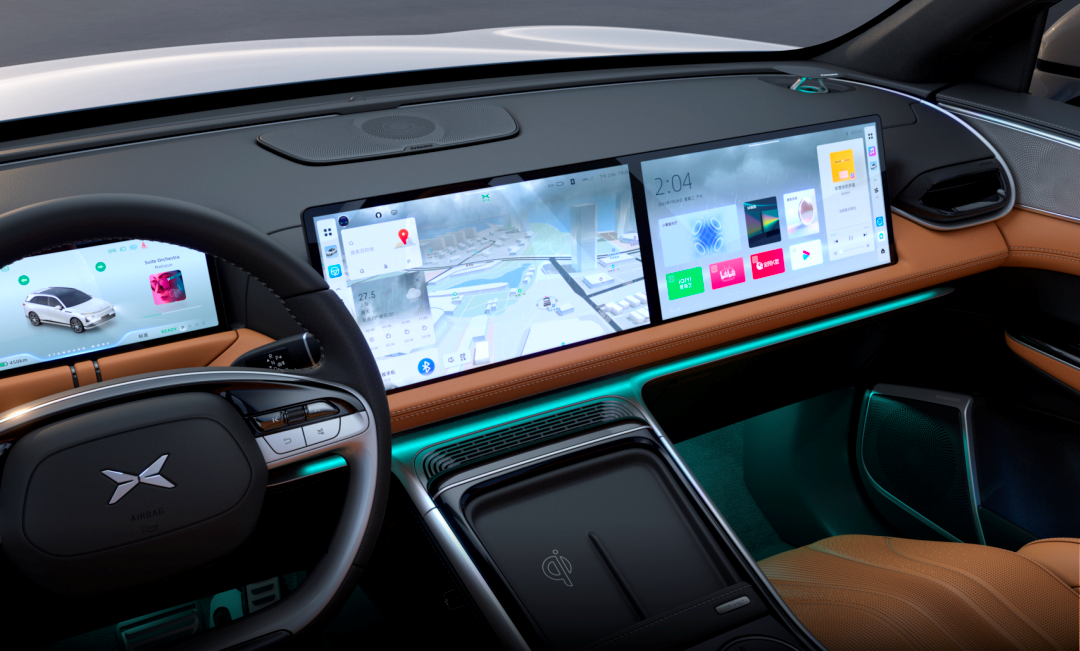
The car uses a brand-new 3D UI interaction, and the main page of the center console screen follows XPeng’s previous UI page layout. The docking bar is placed on both sides, which is convenient for the driver and co-driver to operate easily. The co-pilot screen is somewhat like the card-style layout on a smart TV, and the two screens also support independent information and transfer functions. In addition, the transparent design in many places makes the overall screen picture display more rich in hierarchy.
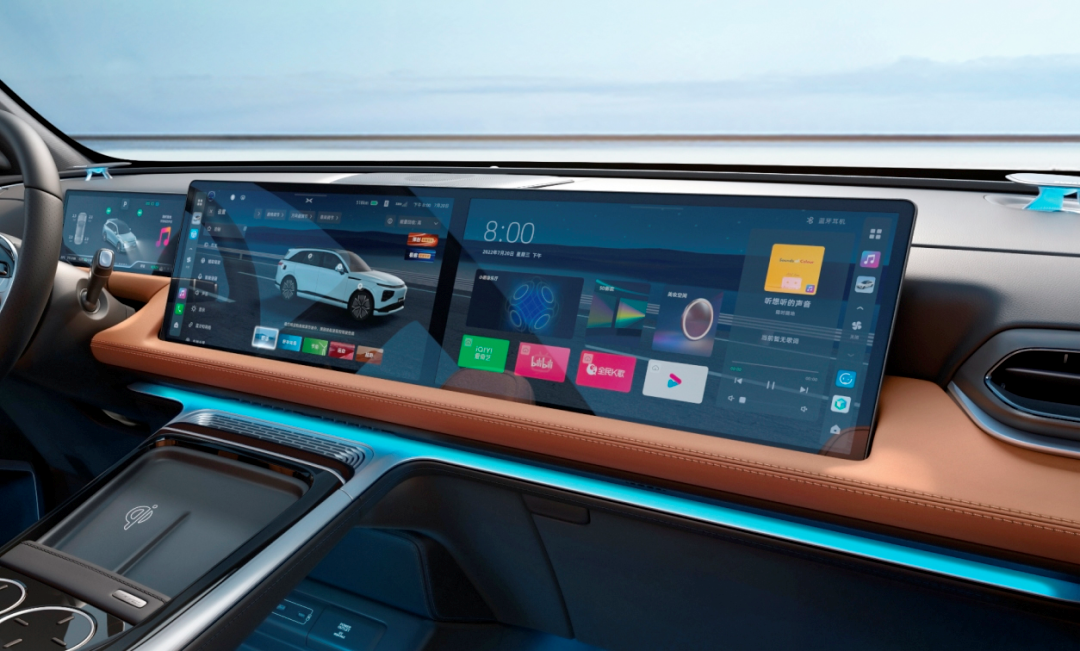
There are also two small details in this renderings, not only the cabin adjustment and steering wheel adjustment are added above the screen, but also the suspension adjustment, which provides two new driving modes: ejection and geek on the right. In terms of voice, G9 will provide four-tone zone dialog ability and support offline dialog.In addition, the Dali speaker, which is clearly visible in the official image, is also one of the important configurations of XPeng G9. After all, the Xopera XPeng Music Hall will bring users an immersive 5D experience with full-scenario sound, and it is definitely not possible without sufficient hardware support.
With a total power of 2250 W from 28 acoustic units throughout the car, G9’s audio system is the champion in terms of both quantity and power among the new car manufacturers so far.
At the same time, with the support of Dolby panoramic sound and 7.1.4 multichannel audio, it must be said that the audio system of new energy vehicles this year is really impressive.
As for the immersive 5D experience, the air conditioning, fragrance, seat vibration, and ambient lighting will all change with the content (movies, games, meditation mode, etc.). However, the final effect depends on how well XPeng’s adaptation can support it.
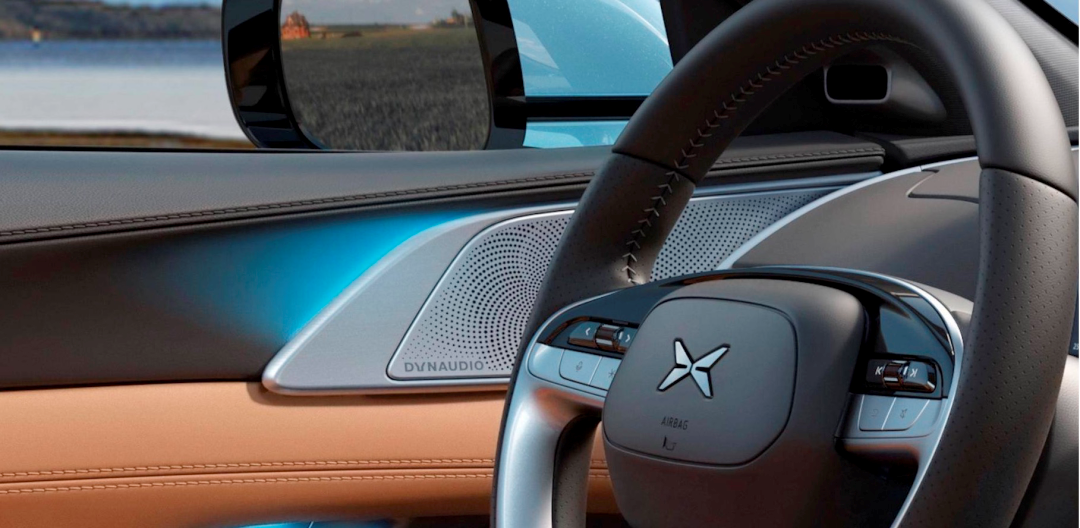
Apart from the screen, the two multifunctional buttons on the steering wheel also have a completely new design. Using a combination of roller and button mode, the left side is for voice control, custom buttons, and auxiliary driving control, while the right side should be the standard multimedia control. A clear button design and roller combination will make the control more precise. To be blunt, the multifunctional buttons on the P7’s steering wheel are extremely difficult to use, so much so that the first time I drove the P7, I thought the multifunctional buttons were broken.
In addition, the DMS camera is not placed in the center of the steering column this time, but below the A-pillar. The infrared fill light module has also been moved from the top of the steering wheel to below it.
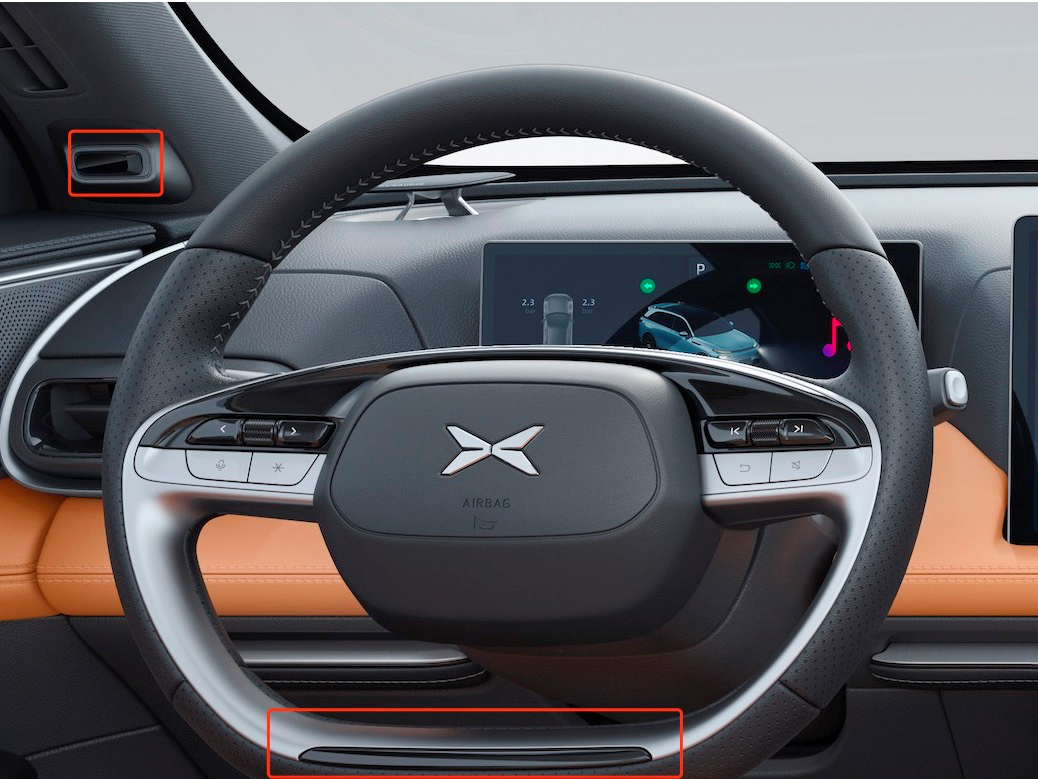
The center console adopts the currently mainstream wireless charging pad + cup holder + armrest design. However, only the left side of the front row with the “QI” logo has a 15W wireless charging function for phones, and it is unknown whether G9 will have two in the mass-produced version. The cup holder adopts a pop-up design, which is highly praised.
There is a storage space below the center console, equipped with 1 USB-A and 1 Type-C port, and the cover plate of the cigarette lighter position indicates “12V, 180W”.
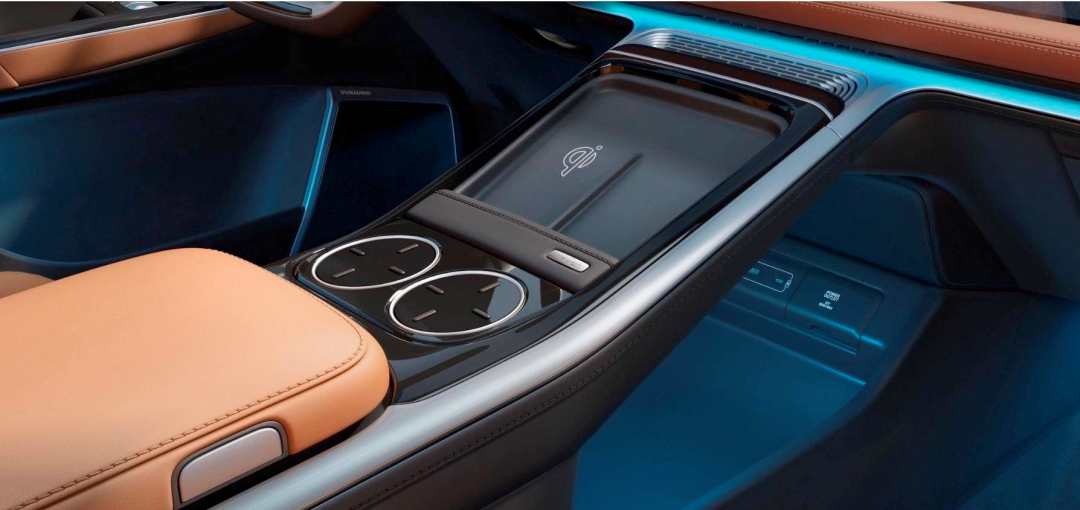 When it comes to the seats, the seat stitching texture is inspired by the “waist” design of the Guangzhou Tower and wrapped entirely in Nappa leather. Careful observation reveals that all seats have been lengthened to enhance comfort, and the front passenger seat not only provides a footrest but also comes equipped with a “boss” key. Moreover, with a 87 mm * 200 mm makeup mirror, it supports customized beauty scenes such as soft light warm skin and natural beauty skin. The seat position can also be set to “mirror mode” with just one click.
When it comes to the seats, the seat stitching texture is inspired by the “waist” design of the Guangzhou Tower and wrapped entirely in Nappa leather. Careful observation reveals that all seats have been lengthened to enhance comfort, and the front passenger seat not only provides a footrest but also comes equipped with a “boss” key. Moreover, with a 87 mm * 200 mm makeup mirror, it supports customized beauty scenes such as soft light warm skin and natural beauty skin. The seat position can also be set to “mirror mode” with just one click.
In terms of functionality, the front seats provide heating, ventilation, massage, and dynamic functions, while the rear seats provide heating and massage functions, and the seat back supports electric adjustment from 27° to 37°. As for space, the G9 is positioned as a large five-seater SUV with dimensions of 4891 × 1937 × 1680 mm and a wheelbase of 2998 mm, so there is no need to worry too much about rear seat space.
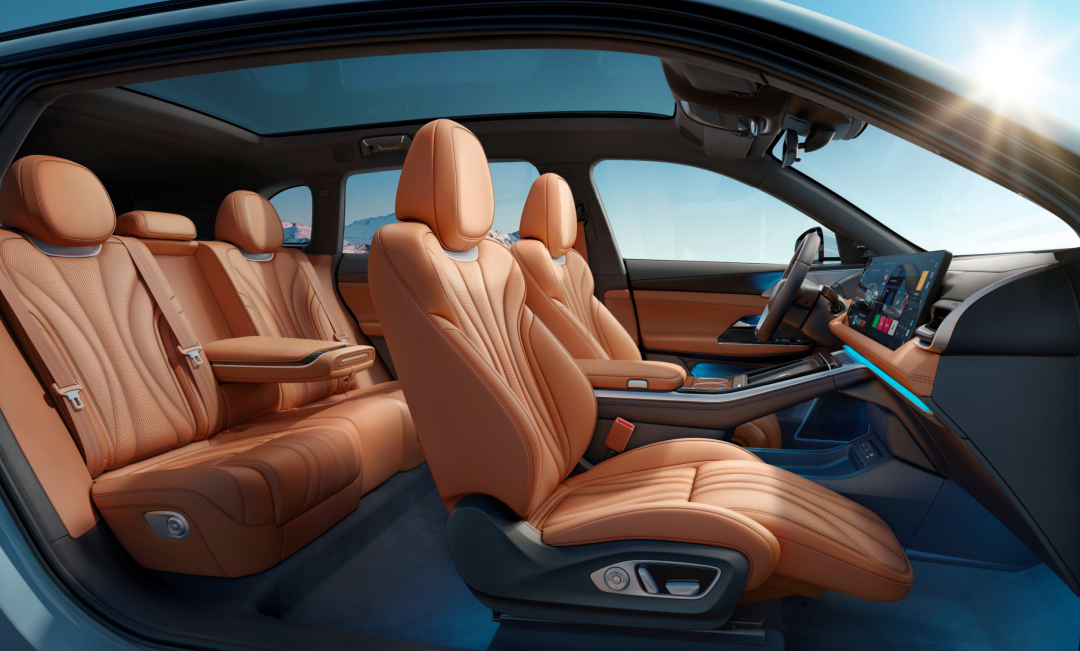
From the design details of the G9 interior, we can see that XPeng has made great progress in vehicle engineering design, with a more practical steering wheel, larger tilt angle for the central control screen, and longer cushion length, among other features. This adds more practicality to the “cool” XPeng.
Wait, there’s more
In addition to the interior, XPeng also “conveniently” revealed some important information about the G9.
As the first mass-produced vehicle in China to be equipped with an 800V high-voltage SiC platform, the high-voltage and high-current charging solution makes the G9 capable of a peak charging power of 480 kW.
Simply put, in ideal conditions, 5 minutes of charging can increase the range by 200 km. XPeng also plans to deploy a new generation of S4 super charging piles this year, with a maximum charging power of 480 kW and a maximum current of 670 A per gun. Of course, the super charging layout of S4 will pose another serious challenge for XPeng’s G9.
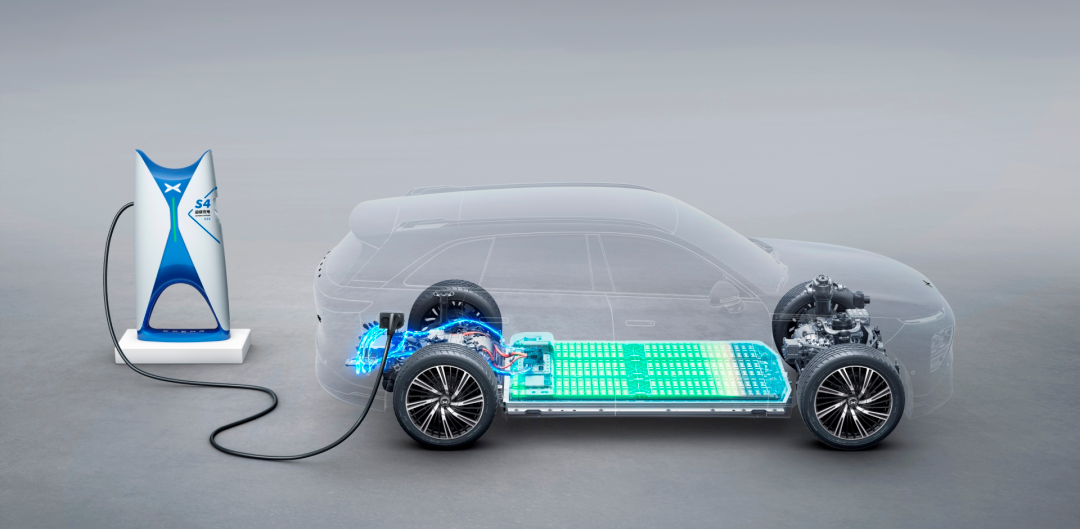
In addition to its high charging capacity, the G9’s range is also impressive. According to the previous Ministry of Industry and Information Technology information, the range of the single-motor version of the G9 equipped with a 98 kWh battery will reach 702 km (CLTC), and the dual-motor version can also reach 650 km.
In addition to improving the electric drive efficiency through SiC modules, the 0.272 drag coefficient is believed to be one of the key factors in improving the G9’s range.In terms of power, the rear-wheel drive version of the car uses a 230 kW permanent magnet motor, while the four-wheel drive version uses a front 175 kW induction motor + rear 230 kW permanent magnet motor power combination, with a peak power of 405 kW and peak torque of 717 N・m. Xiao Peng officially revealed that the G9 can accelerate from 0 to 100 km/h in just 3 seconds.
On the chassis side, the G9 adopts a front double-wishbone + rear five-link suspension combination, and is equipped with dual-chamber air springs and CDC shock absorbers, theoretically providing great improvements in comfort.
Xiao Peng, which boasts strong intelligent attributes, has even left out the suspension. The dual-chamber air springs, combined with sensing hardware and high-precision maps, can anticipate road conditions in advance and actively adjust the suspension to better cope with complex road conditions. Furthermore, Xiao Peng officials have revealed that the G9’s chassis system has been finely tuned by a German engineering team for two years, but actual performance remains to be seen in the dynamic test drive.
In addition, the G9 is also one of the first models with towing capacity, and users can choose to equip an electric tow hook with a maximum towing weight of 1500 kg. It is worth noting that the power consumption will increase significantly and the energy recovery experience will decrease significantly after attaching a trailer. The electric tow hook is actually more of an expression of Xiao Peng’s global strategy and has been designed to meet the needs of the European market to some extent.
The biggest highlight of the G9 is its intelligent driving capabilities. He XPeng has repeatedly stated that the intelligent driving capabilities of the G9 will increase significantly, even greatly boosting the sales of the Xiao Peng G9, achieving end-to-end intelligent driving in a true sense, and combining parking, high-speed, and city intelligent driving.
A brief review of the intelligent driving hardware carried by the G9 includes:
- 12 cameras;
- 2 LiDARs;
- 5 millimeter-wave radars;
- 12 ultrasonic radars;
- Dual Orin-X chips with a computing power of 508 TOPS.
Purely from a hardware perspective, Xiao Peng G9’s intelligent driving hardware is not the most outstanding. However, in recent months, Xiao Peng has demonstrated its software engineering capabilities with its CNGP ability achieved through the P5 30 TOPS Xavier chip.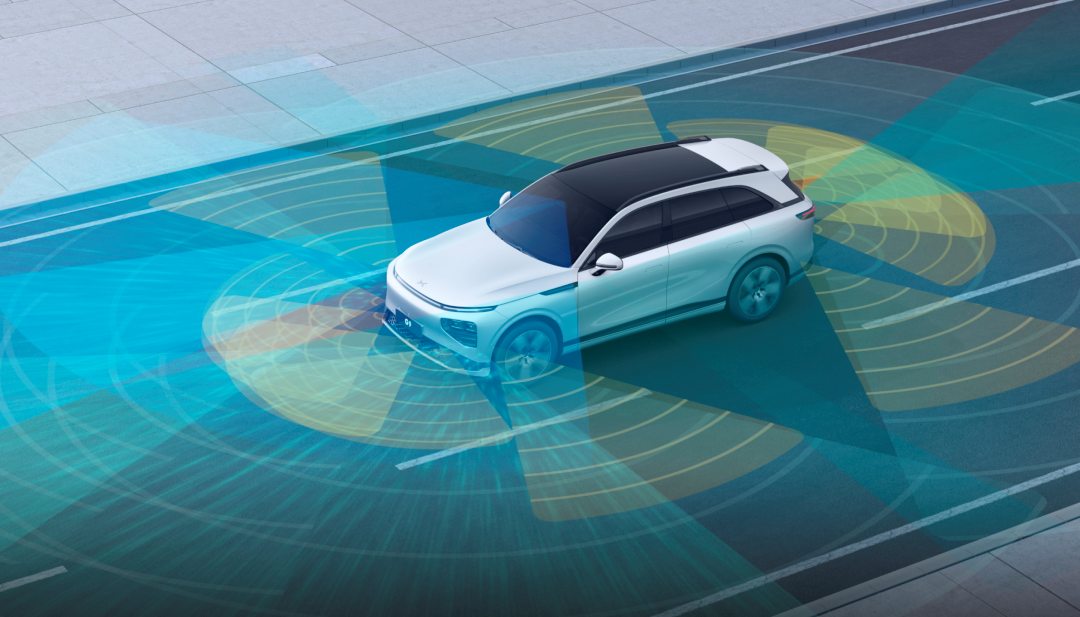
The doubled Orin-X chip brings a boost in computing power, allowing XPeng’s long-restricted software capabilities to shine. If XPILOT 4.0 performs well, XPeng will also receive a considerable amount of software income.
Moreover, XPeng has also adopted the new EEA 3.0 electronic and electrical architecture, and the most noticeable improvement for users is a greatly increased OTA speed, which can be updated without stopping the vehicle. Passive awareness is that you will find that the OTA frequency of the G9 is higher, and the scope of the update is wider.
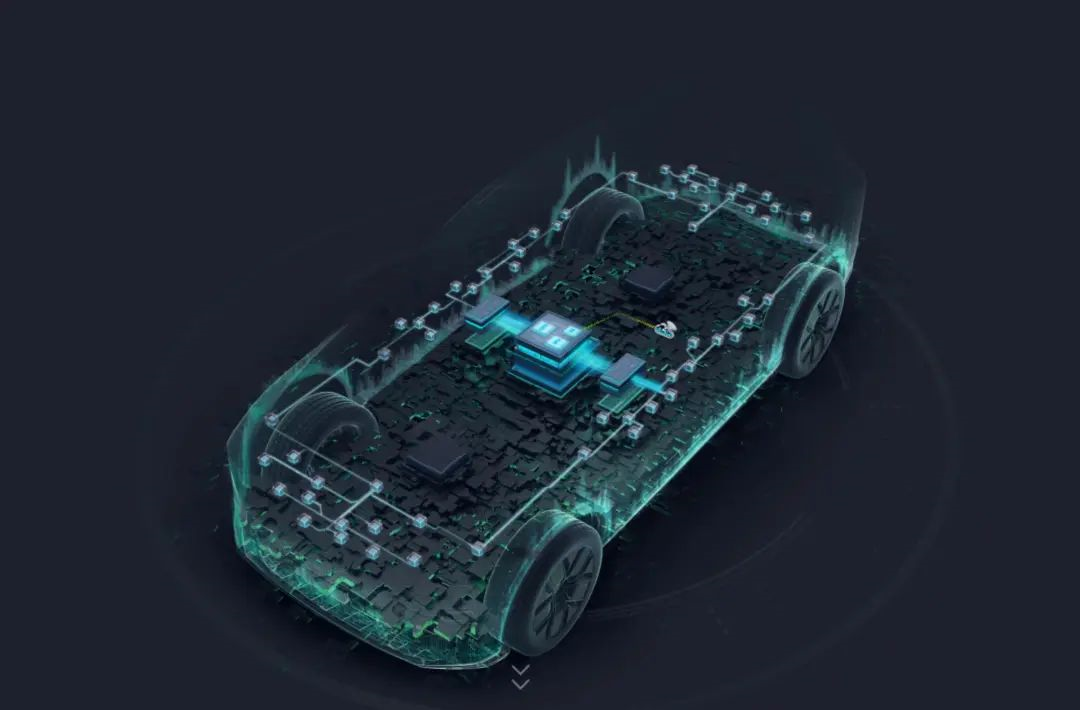
Summary
XPeng’s G9 is equipped with a lot of new technologies, including the 800V high-voltage platform, EEA 3.0 electronic and electrical architecture, and end-to-end intelligent driving capability. Since the birth of the XPeng brand, it has always maintained a leading advantage in intelligence. The appearance of G3 has improved the experience of automatic parking by more than one level. P7 has become the first domestic model to achieve high-speed navigation assistance. The P5 will soon accelerate the progress of intelligent driving on domestic city roads. In terms of voice assistants, XPeng is also leading everyone forward.
So, what are XPeng’s shortcomings? Insufficient vehicle engineering capabilities, such as G3’s styling design, P7’s trunk cannot be opened directly from the outside, P5’s body design after making concessions on space, and chassis tuning, among others. This is a process that every new car manufacturing company must go through.
In the G9, I see XPeng making comprehensive progress. While maintaining its leading edge in the intelligent field, practical and more reasonable cabin layout, increased emphasis on chassis quality, and so on, it is filling the gaps in XPeng’s weakest links.
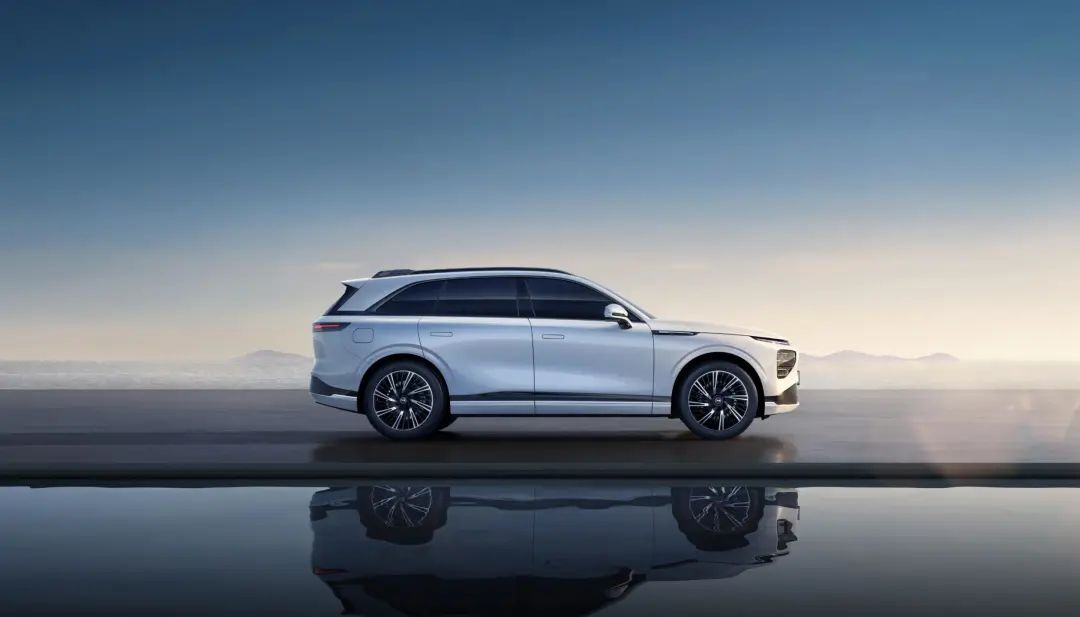
Of course, there is much more expected of the G9. A higher brand tone is one of the responsibilities that G9 needs to shoulder, after all, XPeng has never entered the luxury car lineup of 400,000 yuan from G3-P7-P5.
In addition, the higher gross profit margin brought by the G9 will also give investors a sense of relief. Compared to NIO and LI, whose gross profit margins are currently maintained at around 20%, gross profit margin performance is also one of the issues XPeng is eager to solve.In the price range of 300,000 to 400,000 yuan, there are many competitors of XPeng G9, and the just-released Autov (AVTRON) 11 has the ability to compete directly with XPeng G9 in terms of luxury, comfort, and intelligence. Can XPeng G9 surpass P7 this time and take XPeng’s brand to the next level?
This article is a translation by ChatGPT of a Chinese report from 42HOW. If you have any questions about it, please email bd@42how.com.
